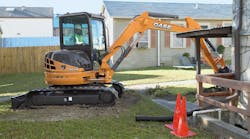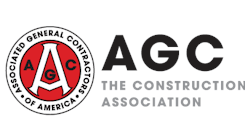Nonresidential Projects Drop, but Housing Starts and Permits Soar, Dodge Data Shows
Dodge Data & Analytics
Three private measures of recent and expected nonresidential construction activity were negative in July. In contrast, Census Bureau data signaled a strong rebound in residential starts and permits.
Total construction starts in dollars fell 7 percent from June to July at a seasonally adjusted annual rate, Dodge Data & Analytics reported Monday.
“The decline was due to a significant pullback in the nonbuilding segment, which fell 31 percent from June to July,” said chief economist Richard Branch. “Nonresidential building starts rose 3 percent while starts in residential building increased by 2 percent. Year-to-date through seven months, starts declined 15 percent from the same period in 2019. Nonresidential starts plummeted 25 percent, nonbuilding starts dropped 20 percent, and residential starts slipped 4 percent. The gain in nonresidential building starts was entirely due to strength in the Northeast and West regions, with starts in the South Atlantic and South Central regions down sharply during the month. While one month doesn’t constitute a trend, the potential risk to construction from the rising number of COVID cases in these regions is significant.”
Construction start in dollars tumbled 36 percent year-over-year (y/y) from July 2019 to July 2020 and 20% year-to-date, data firm ConstructConnect reported on Friday. “July 2020 nonresidential starts versus July 2019 were a jaw-dropping -44 percent....In 2020 year-to-date starts, the privately-financed categories of construction have been weakest—commercial, at -34.6 percent, and industrial, -77.5 percent--while public/government works have fallen into shallower pits—institutional, -15.0 percent, and engineering, -9.4 percent.”
ConstructConnect’s total residential starts in July were -21 percent y/y and -11 percent year-to-date. Multiunit starts were -34 percent year over year and -22 percent year-to-date. Single-family starts were -16 percent y/y and -6.2 percent year-to-date.
The Architecture Billings Index was unchanged from June to July, with a reading of 40.0, the American Institute of Architects reported on Wednesday. AIA says, “The ABI serves as a leading economic indicator that leads nonresidential construction activity by approximately nine to 12 months.” The ABI is derived from the share of responding architecture firms that reported a gain in billings over the previous month less the share reporting a decrease in billings, presented as a score between 0 and 100. Any score below 50 means that firms with decreased billings outnumbered firms with increased billings.
“Inquiries into new projects continued to show just a modest decline, but more seriously, the value of new signed design contracts slipped from its June level.” ABI scores by practice specialty (based on three-month moving averages) all increased from June but remained below 50: residential (mostly multifamily), 47.5 (up from 45.7 in June); mixed, 44.0 (up from 38.1); institutional, 39.5 (up slightly from 39.4); and commercial/industrial, 35.4 (up from 31.4). The index for design contracts slipped from 44.0 to 41.7. “On average, firms expect a decrease of 4.6% in their revenue [from the second quarter of 2020 to the third quarter], although [27%] of responding firms…anticipate that their revenue will increase.”
Housing starts (units) soared 23% at a seasonally adjusted annual rate from June to July as well as y/y, Census reported on Tuesday. Multifamily (five or more units) starts jumped 57% for the month and 68% y/y. Single-family starts climbed 8.2% from June and 7.4% y/y. Residential permits increased 19% from June and 9.4% y/y, with single-family permits up 24% for the month and 16% y/y, and multifamily permits up 24% for the month but down 0.4% y/y. Wells Fargo Economics commented, “The vast majority of multifamily starts are for apartments, which have seen vacancy rates increase in recent months and have seen rents ease up a bit. Vacancy rates have increased, and rents have softened much more in New York City, San Francisco and Los Angeles, however, then nationwide. The weakness in these highly visible markets may be weighing on forecasts for the sector. Demand for apartments outside these mega-metro areas has actually remained fairly strong and rents have held up much better. Moreover, the move away from these large, densely populated, high-cost metro areas has boosted demand elsewhere, such as Phoenix, Salt Lake City, Austin, Charlotte and Nashville.”






